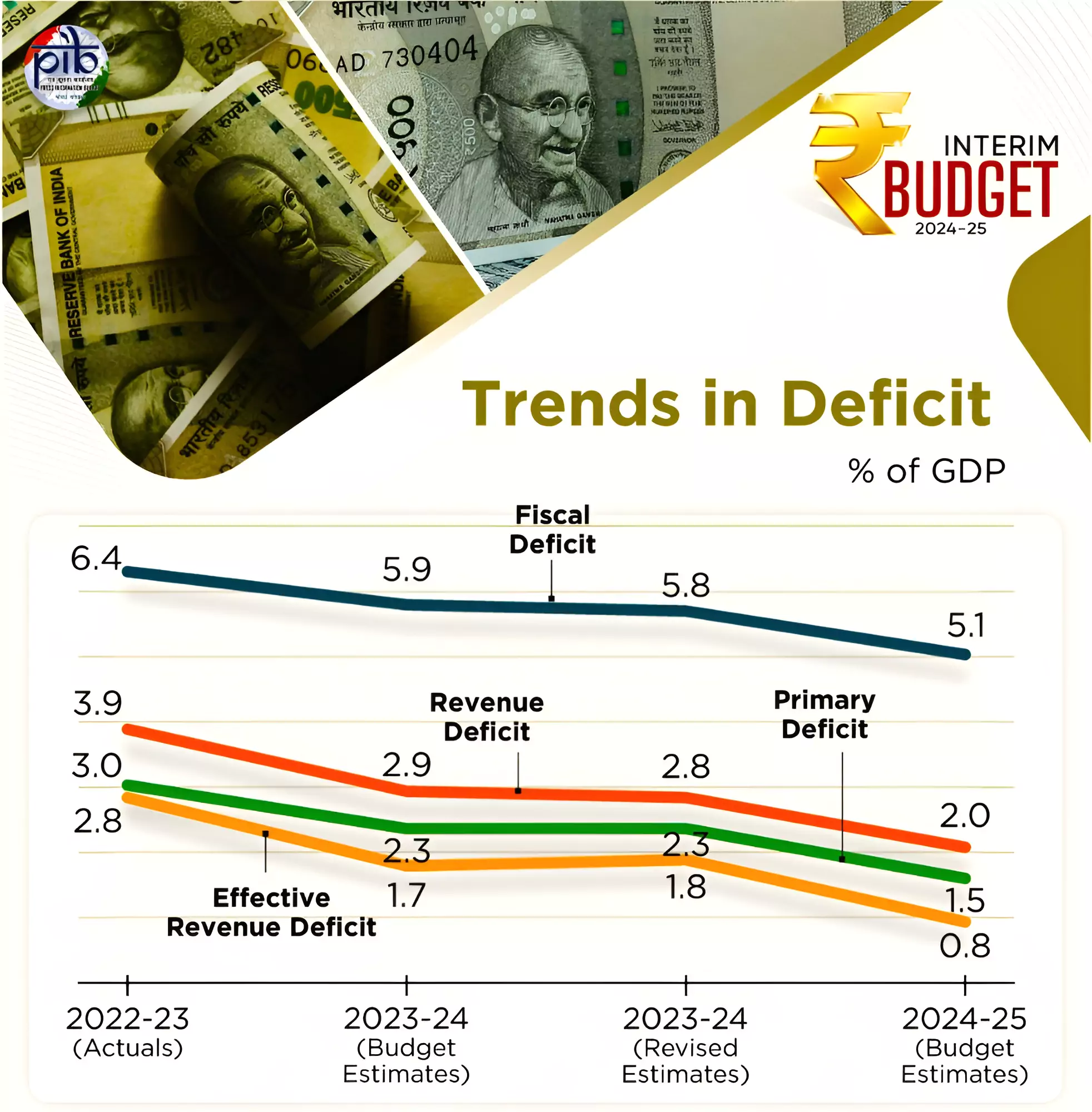In her interim budget 2024-25 speech Finance Minister Nirmala Sitharaman announced that the centre would reduce its fiscal deficit to 5.1% of GDP in 2024-25.

Positive Aspect of Fiscal Deficit |
Negative Aspect of Fiscal Deficit |
|
|
Legislation Related to Fiscal Management in India
|
|---|
Fiscal consolidation measures can involve tough policy choices and may have short-term economic costs including reduced public spending but it underscores the importance of structural reforms to enhance productivity and competitiveness.
Also Read:
News Source: The Hindu
| Must Read | |
| NCERT Notes For UPSC | UPSC Daily Current Affairs |
| UPSC Blogs | UPSC Daily Editorials |
| Daily Current Affairs Quiz | Daily Main Answer Writing |
| UPSC Mains Previous Year Papers | UPSC Test Series 2024 |
To get PDF version, Please click on "Print PDF" button.
SC Verdict on Newsclick Shows Adherence to Due Pro...
Stay Invested: On Chabahar and India-Iran Relation...
Credit Rating Agencies, Impact on India’s De...
Catapulting Indian Biopharma Industry
Globalisation Under Threat, US Import Tariffs Have...
Global Report on Hypertension, Global Insights and...
<div class="new-fform">
</div>
